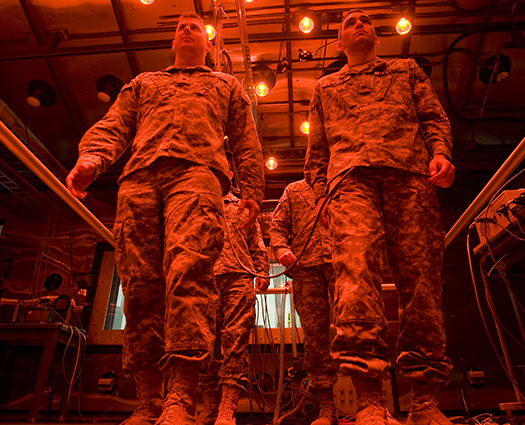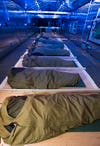Inside The Army’s Sunshine Simulator
Now reporting for light duty

Each year, some 20 soldiers experience Afghanistan’s 118°F heat for the first time not in the field but in a lab in Natick, Massachusetts. For six decades, the Doriot Climatic Chambers has created everything from deserts to blizzards to test equipment before real-world deployment—and it’s the U.S.’s only military lab that uses human volunteers to do it.
The chambers are divided into two areas: tropic and arctic. Josh Bulotsky, the electrical engineer who manages the lab, can control every aspect of each climate. Two 500-horsepower cooling systems and a heater create –70°F to 165°F temperatures; dehumidifiers and water misters produce 10 to 90 percent humidity; sprinkler heads simulate rain; and a snow machine makes winter storms. In the chambers, soldiers sometimes walk on treadmills that fit five people (to simulate a group march). And to track their health, they can swallow telemetry pills that relay their core temperatures to lab technicians. In January, the lab added the sun: eighteen 1,500-watt metal-halide vapor lamps so bright that it’s impossible to look straight at them—perfect for testing portable solar panels. Brutal as the tests are, better that the troops and their equipment fail now than on the other side of the world.

The Arctic Lab

Don’t Let the Chilly Temps Bite

Engineering Mother Nature

Float to the Top
Pouring On Lunch